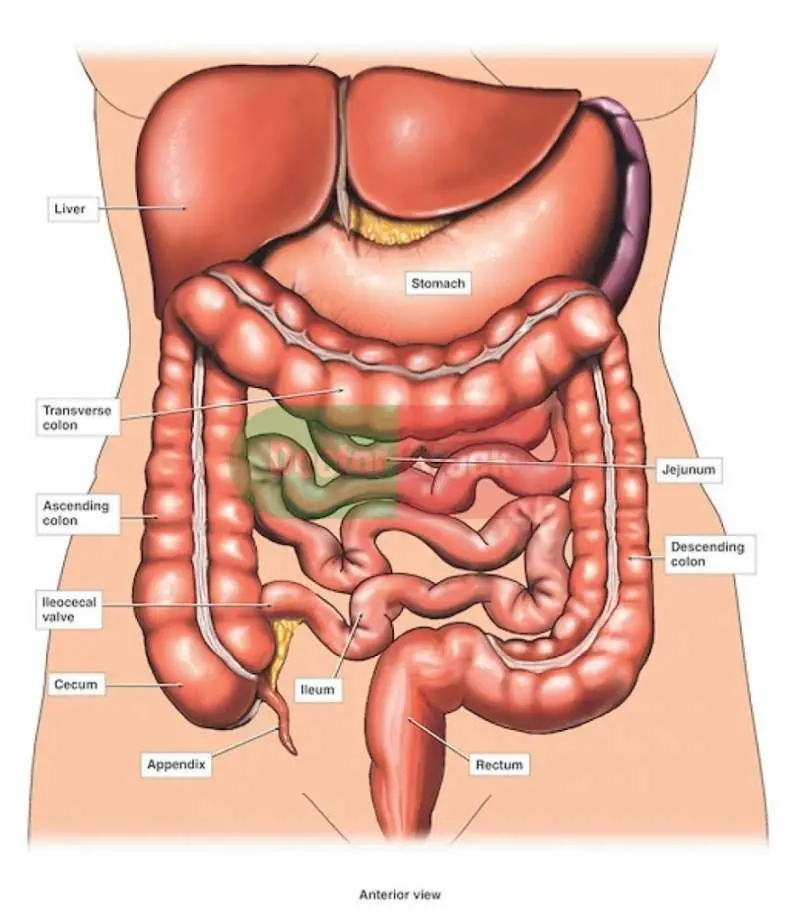
Diagram of stomach
he human stomach is a marvel, capable of storing up to four liters of food and playing a crucial role in digestion. This process involves receiving a bolus of food, churning it, and breaking it down through hydrolysis, resulting in a product called chyme. The stomach's anatomy, including parietal cells, chief cells, and mucus cells, facilitates.
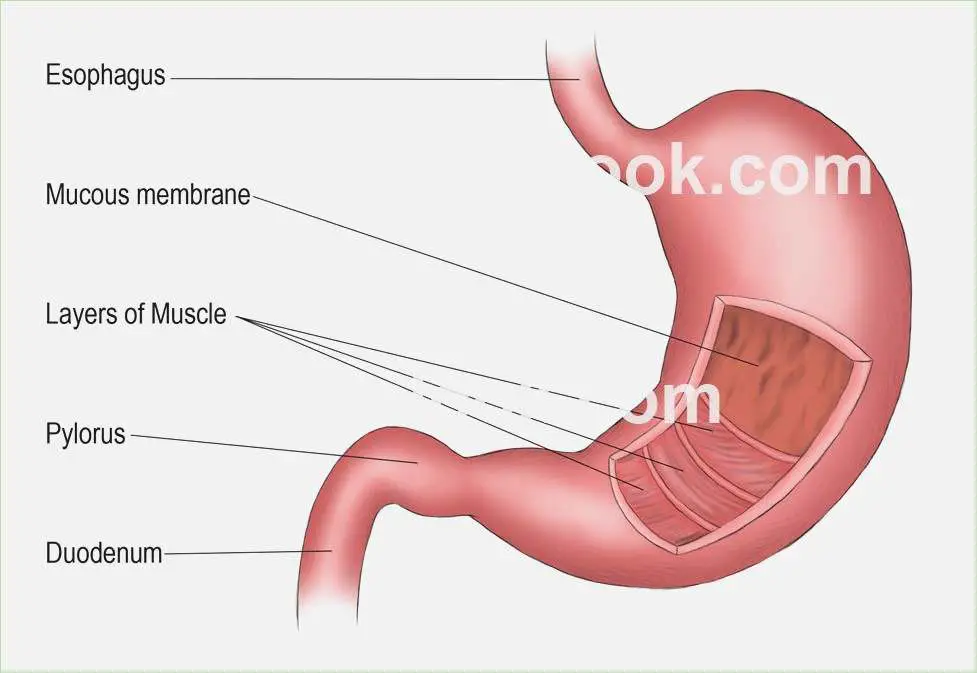
Diagram of stomach
The stomach is an important organ and the most dilated portion of the digestive system. The esophagus precedes it, and the small intestine follows. It is a large, muscular, and hollow organ allowing for a capacity to hold food. It is comprised of 4 main regions, the cardia, fundus, body, and pylorus. The cardia is connected to the esophagus and is where the food first enters the stomach. The.

Barrio Lechuguilla papi stomach anatomy diagram Productividad en un día festivo Jugando ajedrez
ISSN 2534-5079. This e-Anatomy illustrates the gross anatomy of the digestive system. We focused especially on the diagrams of the abdominal digestive system (oesophagus is described on the modules about the thorax and oral cavity/pharynx on the ENT modules). 84 anatomical diagrams and histological images with over 300 labeled anatomical parts.

Physiology of the stomach
1/4 Synonyms: Ventriculus The stomach is an organ of the digestive system, specialized in the accumulation and digestion of food. Its anatomy is quite complex; it consists of four parts, two curvatures and receives its blood supply mainly from the celiac trunk. Innervation is provided via the vagus nerves and the celiac plexus .
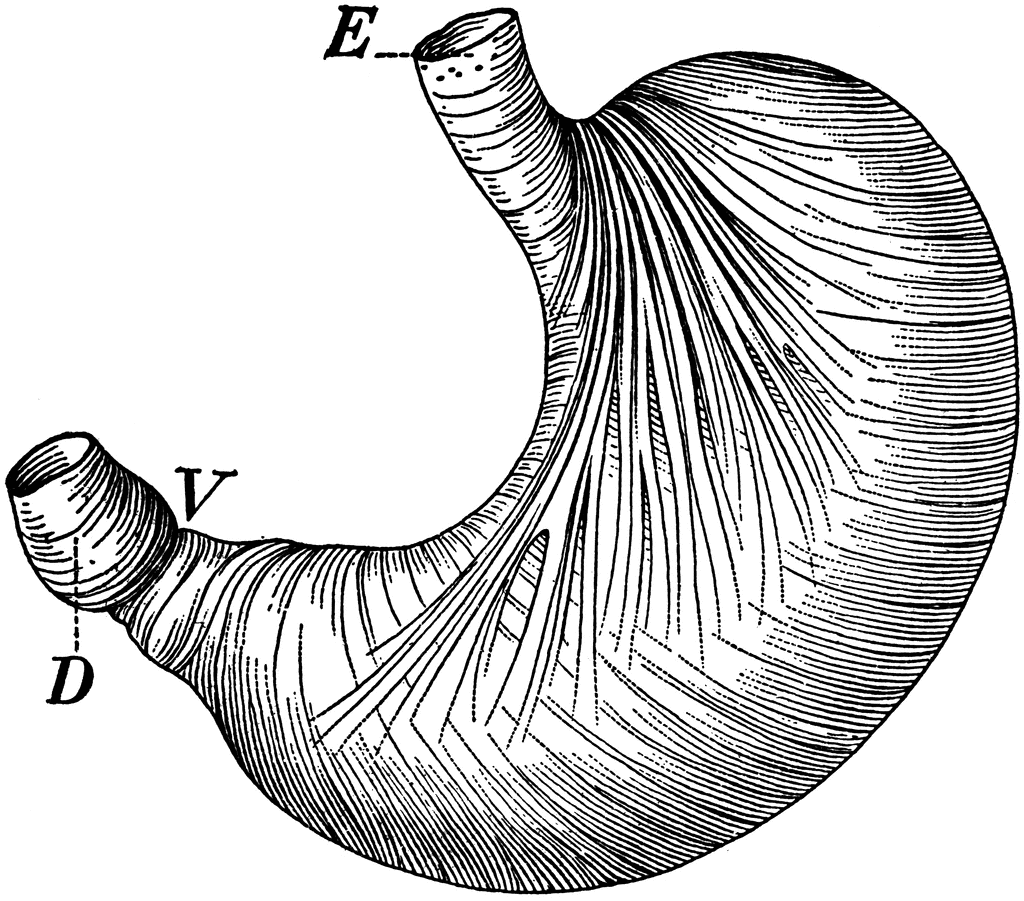
Stomach ClipArt ETC
Label on a diagram the four main regions of the stomach, its curvatures, and its sphincter Identify the four main types of secreting cells in gastric glands, and their important products Explain why the stomach does not digest itself Describe the mechanical and chemical digestion of food entering the stomach

Simple stomach diagram Stomach structure Stomach Anatomy Stomach diagram, Digestive system
The cardia (or cardiac region) is the point where the esophagus connects to the stomach and through which food passes into the stomach. Located inferior to the diaphragm, above and to the left of the cardia, is the dome-shaped fundus. Below the fundus is the body, the main part of the stomach.
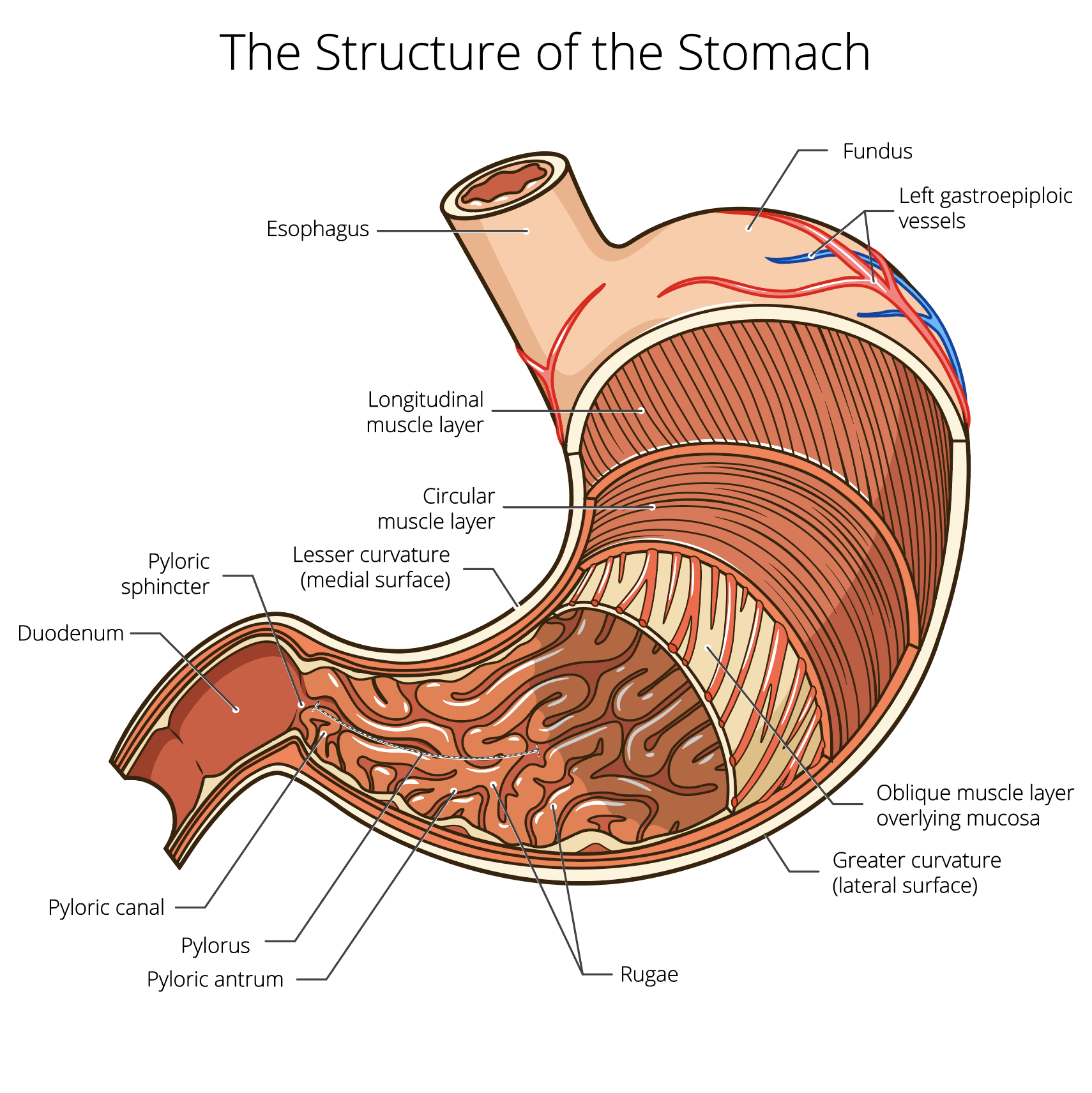
Stomach — High Plains Surgical Associates
Overview. The stomach is the first intra-abdominal part of the gastrointestinal (GI), or digestive, tract. It is a muscular, highly vascular bag-shaped organ that is distensible and may take varying shapes, depending on the build and posture of the person and the state of fullness of the organ (see the image below). The stomach lies in the left.

Pin on Health Office
There are four main regions in the stomach: the cardia, fundus, body, and pylorus (Figure 21.4.1 21.4. 1 ). The cardia (or cardiac region) is the point where the esophagus connects to the stomach and through which food passes into the stomach. Located inferior to the diaphragm, above and to the left of the cardia, is the dome-shaped fundus.

The Stomach Organs Parts, Anatomy, Functions of the Human Stomach
Diagram Stomach Gallbladder Liver Pancreas Small intestine Large intestine How they interact Common problems Summary The stomach is located in the upper part of the abdomen. The digestive.

Stomach Labeled Diagram Stock Vector Image & Art Alamy
The stomach is a key part of the gastrointestinal (GI) tract, sitting between the esophagus and duodenum.Its functions are to mix food with stomach acid and break food down into smaller particles using chemical and mechanical digestion. The stomach can perform these roles due to the layers of the stomach wall.These are the gastric mucosa, submucosa, muscularis externa and serosa.
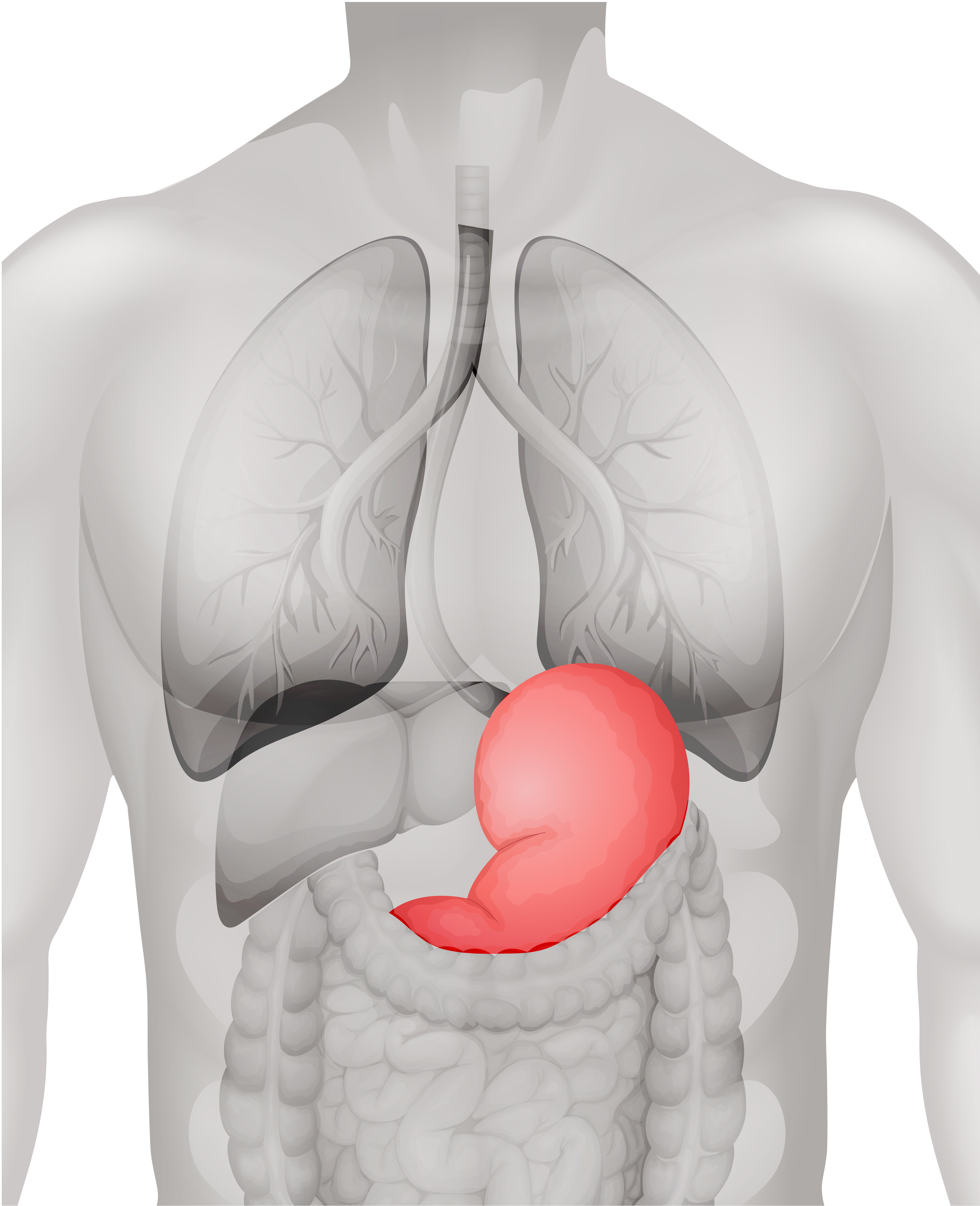
Human stomach diagram in detail 365742 Vector Art at Vecteezy
The stomach is a muscular, hollow organ in the gastrointestinal tract of humans and many other animals, including several invertebrates.The stomach has a dilated structure and functions as a vital organ in the digestive system.The stomach is involved in the gastric phase of digestion, following chewing.It performs a chemical breakdown by means of enzymes and hydrochloric acid.

3d Illustration Of Stomach Stock Photo Download Image Now iStock
Label on a diagram the four main regions of the stomach, its curvatures, and its sphincter Identify the four main types of secreting cells in gastric glands, and their important products Explain why the stomach does not digest itself Describe the mechanical and chemical digestion of food entering the stomach

Anatomy of Stomach in Hindi Bhushan Science YouTube
The stomach has four main anatomical divisions; the cardia, fundus, body and pylorus: Cardia - surrounds the superior opening of the stomach at the T11 level. Fundus - the rounded, often gas filled portion superior to and left of the cardia. Body - the large central portion inferior to the fundus. Pylorus - This area connects the.
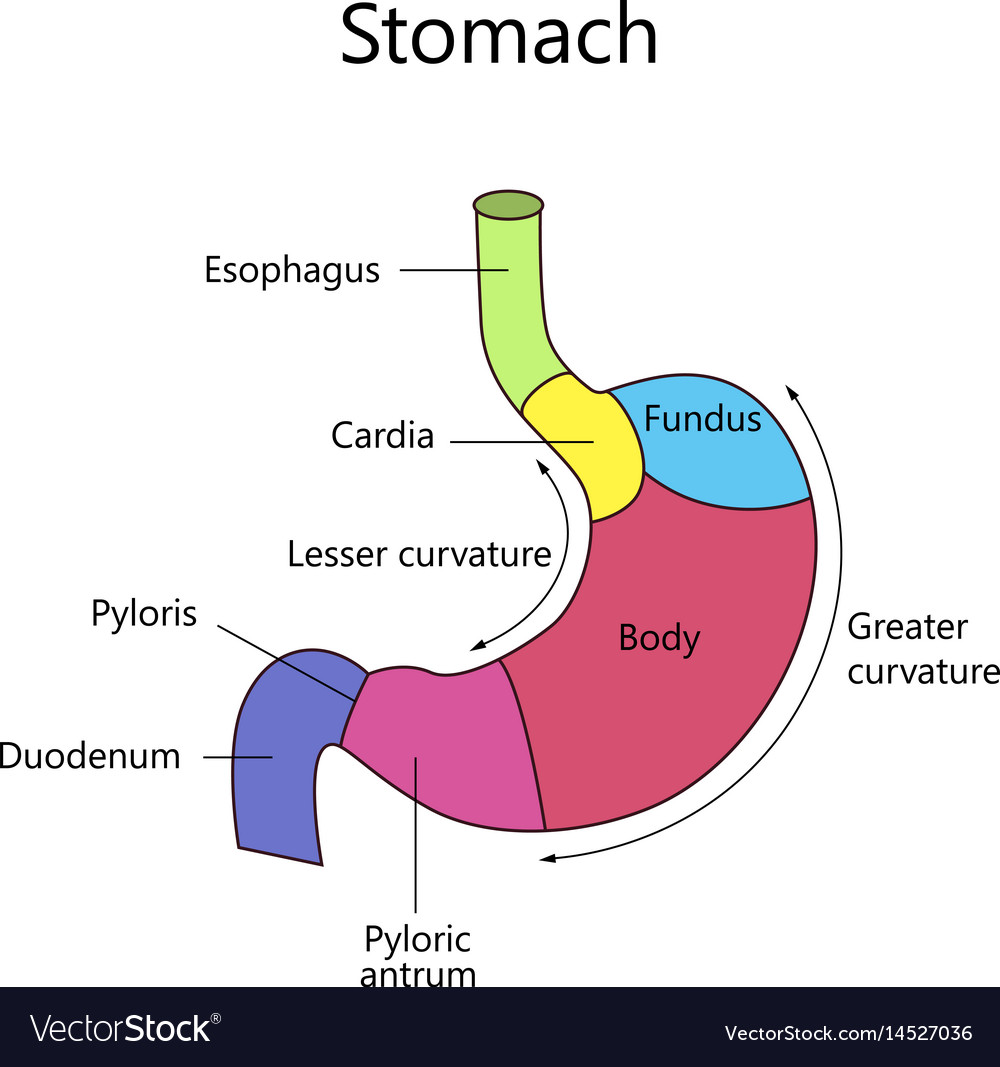
Internal structure human stomach Royalty Free Vector Image
Digestive System Stomach Stomach Stomach The stomach is on the upper-left area of the abdomen below the liver and next to the spleen. It stores and breaks down the foods and liquids we.

Stomach (Anatomy) Definition, Function, Structure Biology Dictionary
stomach, saclike expansion of the digestive system, between the esophagus and the small intestine; it is located in the anterior portion of the abdominal cavity in most vertebrates. The stomach serves as a temporary receptacle for storage and mechanical distribution of food before it is passed into the intestine.

Stomach(human anatomy and physiology) definition, different parts and function of stomach
The stomach is a hollow organ that is part of the gastrointestinal system, and it is responsible for functions including the formation of chyme, synthesis of proteins necessary for vitamin absorption, microbial defenses, and propagates the peristaltic reflex. Contrary to popular thought, the stomach does not contribute to the absorption of any nutrients. This organ can is in the peritoneal.